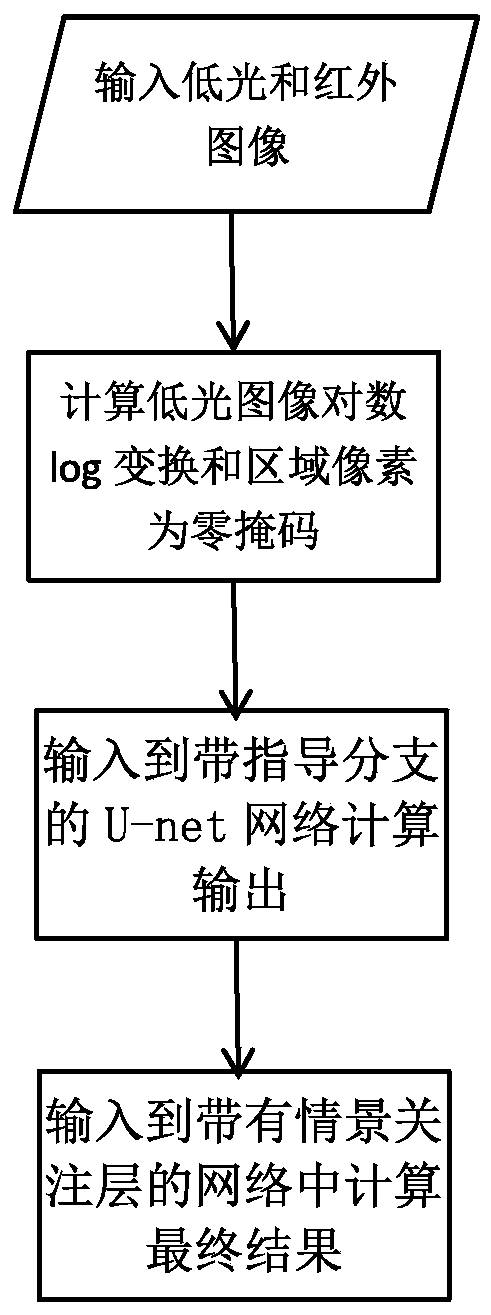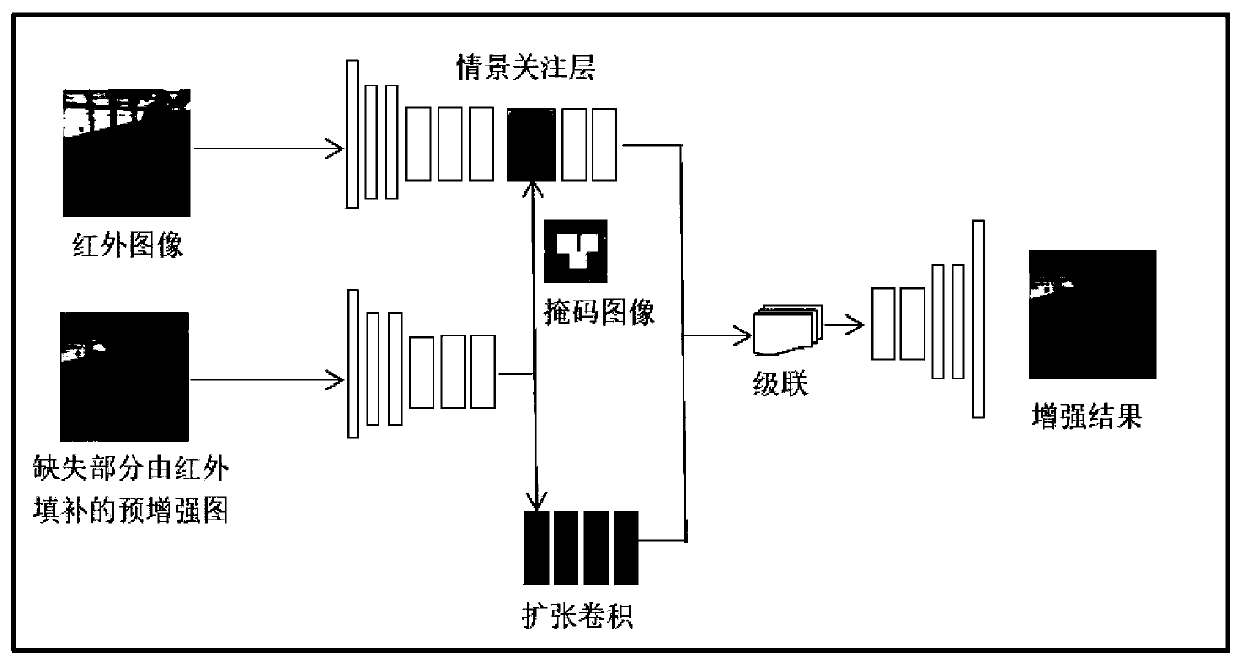Low-light image enhancement method based on infrared information
An image enhancement, infrared image technology, applied in the field of image processing, can solve problems such as inability to solve image missing areas
- Summary
- Abstract
- Description
- Claims
- Application Information
AI Technical Summary
Problems solved by technology
Method used
Image
Examples
Embodiment 1
[0179] Image 6 Shown is the performance of the comparison algorithm and our algorithm on the outdoor test set. From the figure, it can be clearly shown that compared with other algorithms, our algorithm recovers more details in the case of local low light. And other algorithms don't work well in areas where the light is too low. Therefore, this also directly proves the necessity of introducing infrared information in the task of low-light image restoration
Embodiment 2
[0181] Such as Figure 7 As shown, the current low-light image enhancement algorithms have not considered the extremely low-light situation, and our algorithm, because of the introduction of infrared information, has solved the problem of partial missing of the obtained image under extremely low light. In order to better demonstrate this, we not only reduce the brightness and contrast of the test set, but also randomly select 2 to 3 positions on the image to generate a square missing block with a length of 50 to 70 pixels (let pixel value 0) to simulate extremely low light conditions. Since the comparison algorithm cannot restore the missing area very well, we will no longer show the image rendering of the comparison algorithm with the missing area.
Embodiment 3
[0183] Figure 8 shows our ablation experiments. Such as image 3 In the network with scene attention layer, we design a dual-branch structure: one branch is with a foreground attention layer, and its main function is to reconstruct the features of missing regions. The second branch has multiple layers of dilated convolutions, whose function is to increase the receptive field of the network. In order to better demonstrate the working condition of the foreground attention layer, we delete one of the second-stage networks when the first-stage network remains unchanged, so as to observe the changes in the output results.
PUM
 Login to View More
Login to View More Abstract
Description
Claims
Application Information
 Login to View More
Login to View More - R&D
- Intellectual Property
- Life Sciences
- Materials
- Tech Scout
- Unparalleled Data Quality
- Higher Quality Content
- 60% Fewer Hallucinations
Browse by: Latest US Patents, China's latest patents, Technical Efficacy Thesaurus, Application Domain, Technology Topic, Popular Technical Reports.
© 2025 PatSnap. All rights reserved.Legal|Privacy policy|Modern Slavery Act Transparency Statement|Sitemap|About US| Contact US: help@patsnap.com



